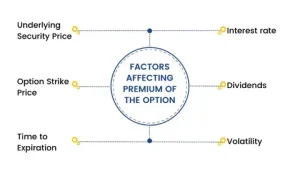It’s likely that you have heard the phrase “latency” if you have ever used the MT5 platform to trade with a prop business. Perhaps you dismissed it with the thought, “That’s probably something only HFT guys worry about,” or perhaps you attempted to fully understand it but gave up midway through an article that was full of technical jargon. In any case, the fact remains that latency is a silent killer of your success in prop trading, especially when you’re dealing with time-sensitive tasks or tight drawdown limitations.
Let’s talk about what platform latency is, how it shows up on MT5, why prop traders should pay particular attention to it, and—most importantly—what you can do to mitigate it.
What Even Is Platform Latency?
Latency refers to the delay time between the moment you click on that buy or sell button in your MT5 terminal and when your order gets executed actually on your broker’s server. It’s typically expressed in milliseconds (ms), and those small fractions of a second count—a lot—when it comes to trading.
You spot a tasty scalp situation. Price reaches your all-important level, you hit “Buy”, and by the time the trade hits the market. The price has shifted. Either you’ve lost the trade altogether or, more frustrating, you’ve been filled at a less favorable price. That’s latency at work.
There are, however, various forms of latency:
- Network latency: How long it takes for data to get from your computer to the broker server.
- Server latency: How long it takes for the broker’s server to respond to your request.
- Execution latency: The total time from when you click until when your order is executed.
All these bits of lag add up. And if you’re a prop trader who’s counting every pip and every second, this kind of thing matters more than you realize.
Why Latency Is a Big Deal for Prop Firm Traders
You might be wondering “I’m not scalping nano-seconds on a billion-dollar algorithm. I’m just trying to pass a prop firm challenge or manage my funded account. Is latency still a big issue?”
Yes. 100% yes. And here’s why:
Every Millisecond Can Affect Your Entry
MT5 might look slick on your screen but if you’re trading during major news events or high-volatility sessions, prices move fast—really fast. A delay of even 100ms could mean the difference between catching a breakout at the right time or being late to the party.
Slippage Adds Up
Slippage is when you attempt to get in at one price but are filled at another. High latency = greater likelihood of slippage. Prop shops tend to enforce tight rules on max daily losses or restrict how much drawdown you can experience, so being slipped by a few pips here and there can bring you near to blowing the account.
It Affects Risk Management
You’re using a stop-loss strategy with tight stops (maybe 5 to 10 pips) to keep within the risk parameters. If your trade executes late and your stop is hit quicker than expected due to price jumps, that’s not just annoying—it’s dangerous. Your trade plan starts falling apart and now you’re over-risking just to play catch-up.
Where MT5 Fits Into All This
MT5 is a fantastic platform. It’s quick, efficient, and much more sophisticated than MT4. But even MetaTrader 5 can only be as good as the setup it’s on. Here’s what influences latency on MT5:
- Your internet speed: Slow or unreliable internet = high latency.
- Distance to the broker’s server: The further you are from it, the longer it takes for your order to reach it.
- Server load: Overloaded prop firm broker server (say, with news)? Delays ahead.
- Use of EAs (Expert Advisors): Trading bots on MT5? Your latency is even more crucial—because EAs need instantaneous execution.
You’re not trading through your own broker in most prop trading setups—your using their equipment. That makes it even more critical that you know the latency scenario on their side, not yours.
Real-World Example: Latency in Action
Suppose you’re entering a trade on GBP/USD on the London Open. You notice a good setup in your 1-minute chart. You enter “Buy” at 1.2650 hoping for a rapid move to 1.2665.
But then there’s an issue.
- Your internet is cranking out 100ms latency on average.
- The server of your broker is in New York, and you’re based in Asia—add another 150ms.
- The server is bogged down because everyone’s climbing on board during the London session.
By the time your trade is executed, you’re filled at 1.2655. That’s a 5-pip slippage. Your RR is now distorted, your risk-to-reward isn’t what you designed it to be, and you’re upset before you even make the trade.
Now do this five or six times in an hour, and you’ve just lost 20-30 pips. not because you were trading badly, but because of latency.
Latency & Trading Styles: Who Should Care Most?
All traders need to be concerned about latency but it punches some styles harder than others.
- Scalpers: You’re the most affected by latency. If you’re aiming to snag 5-10 pips and get half that as slippage? Tough.
- News traders: Latency on high-impact news like NFP or FOMC can ruin an excellent setup. You need lightning-fast execution here.
- Algorithmic traders: Your bots live off millisecond alerts. Latency of even a high value messes up entries, exits, and all in between.
- Intraday traders: You get some latitude, but precision at entry is crucial when you’re out of a trade for only a few hours.
Swing traders? You have some latitude. If your trades last days or weeks, losing a few milliseconds won’t hurt you. But still—don’t completely discount latency.




